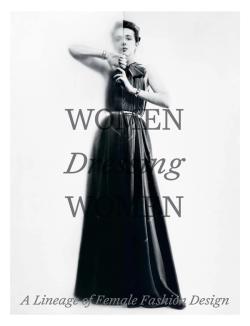"The Styx"
Design House Hawes Incorporated American
Designer Elizabeth Hawes American
Not on view
Elizabeth Hawes created simple, witty, distinctive, elegant and practical garments for women of means. Her designs were so smart and timeless that they were as contemporary in the early 1930s as they were in the late 1940s due to her commitment to quality of materials and simplicity of line. She was committed to the notion that form follows function and paramount in her design sensibilities was the desire to make clothes that were stylish, easy to move in, and by incorporating breathable fabrics, easy to wear. Hawes focused on construction and comfort, rather than embellishment, and incorporated a variety of interesting fabric combinations and construction techniques, successfully using somewhat complex textural juxtapositions to create visual interest. Aspiring to follow in similar design techniques as Madeleine Vionnet, Hawes draped fabrics on the body and creatively pieced together wearable garments that were also beautiful works of art. Hawes’ philosophy toward fashion also shaped her aesthetic. She firmly believed there was a difference between fashion and style. Style, she declared, “is dressing to fit your own self – it lasts.” Hawes Inc. scrapbooks and designer sketchbooks, complete with style documentation and swatches, are part of the Brooklyn Museum Library’s collection. The latter are cross-referenced with many of Hawes’ garments. Taken as a whole, this material provides a remarkably comprehensive look at the work of an exceptional designer.
The striking combination of blue/green changeante taffeta and green satin reflect Hawes' interest in surface treatment and design. Through juxtaposing these two different weaves, though complementary in color, results in a spectacular play of light creating an elegant and dramatic evening dress. The crisscrossing of the taffeta portion of the bodice, coupled with the insertion of a draped collar of satin, adds textural and three dimensional effects. When worn with the bolero, it is not possible to see much of this detail as the cut of the hem follows the lines of the bodice, smoothing out the overall effect. The only place the satin is visible is at the neck, where it creates the appearance of a small stand collar. The reveal of the entire neckline with the removal of the bolero would be dramatic.
In addition, where the skirt is gathered into the bodice, it creates an illusion of the fabric continuing up through the bodice as if threaded through slits and extending into the neckline. This is a complex and very interesting design detail. The bodice extends into the full, circular skirt, opening at the front, exposing the satin underskirt, which would have a very elegant appearance while the wearer moved throughout a space.
Due to rights restrictions, this image cannot be enlarged, viewed at full screen, or downloaded.
This artwork is meant to be viewed from right to left. Scroll left to view more.






